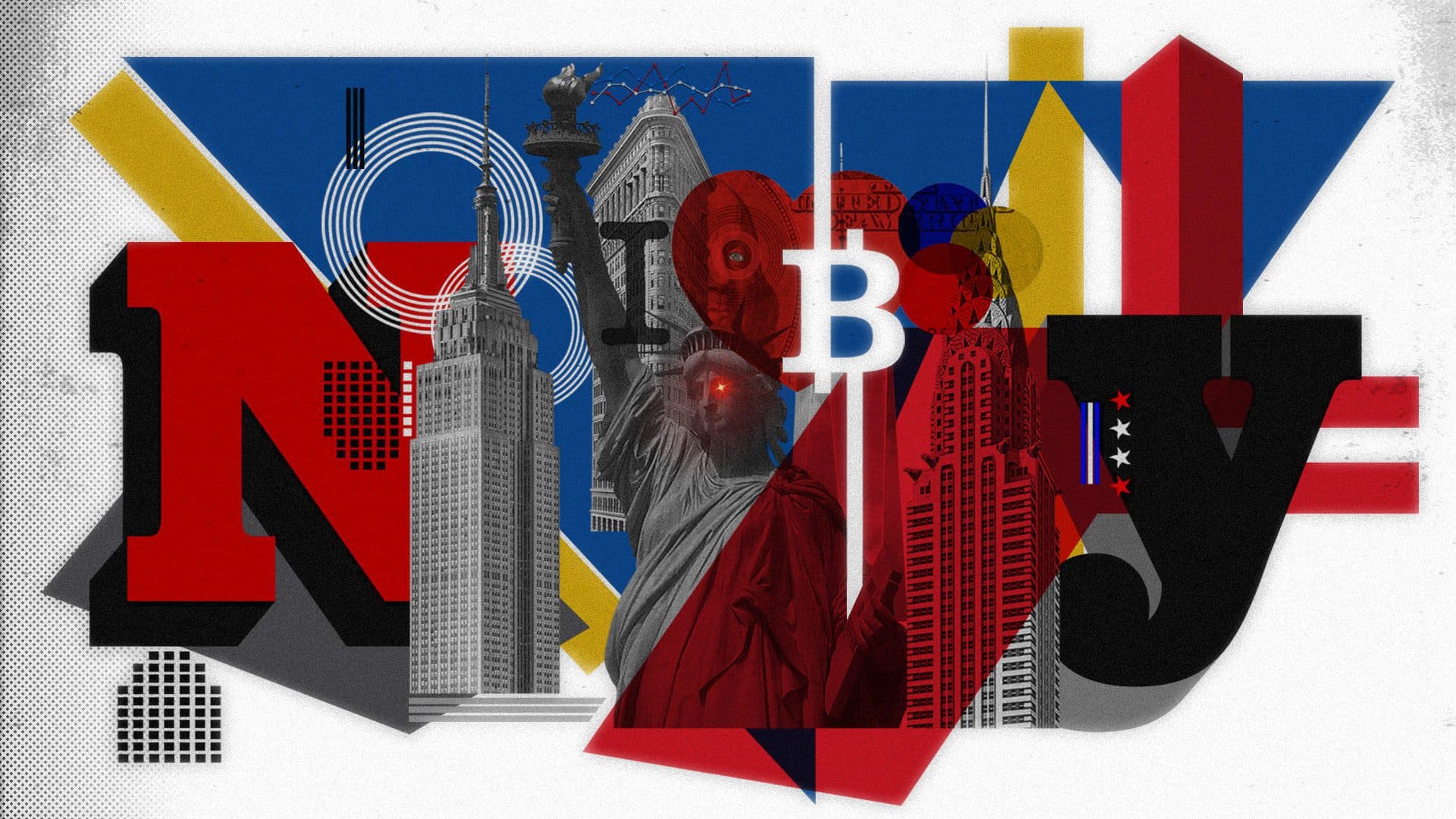NY Fed Leans into CBDC, but Experts Question Its Benefit
The Federal Reserve Bank of New York has partnered with the Bank for International Settlements on a new project that may bring a central bank digital currency to market.

Blockworks exclusive Art by Axel Rangel
- The New York Federal Reserve has created an innovation center that will look into FinTech and CBDCs
- A report from the NY Fed and other economists suggests that a CBDC may improve consumer privacy and financial access
The Federal Reserve Bank of New York is looking into how disruptive technologies like a central bank digital currency (CBDC) will impact the current financial landscape.
The district bank has created the New York Innovation Center (NYIC) in partnership with the Bank for International Settlements (BIS) Innovation Hub. The center will work to “design, build, and launch new financial technology products and services for the central bank community,” potentially including CBDCs, the NY Fed announced in a statement Monday.
“The Federal Reserve and other central banks have a much wider perspective on the role disruptive technologies might play in the global financial system than just CBDCs and virtual currencies,” Nicholas Colas, co-founder of Data Trek Research said, referring to the implications of the center.
The financial technology products the NYIC is considering include surveillance and regulatory technology that would incorporate artificial intelligence into how central banks monitor compliance and anti-money launching, Per von Zelowitz, director of the center, said. The center will also explore potential improvements to the current financial market infrastructure, including investigations into a CBDC, von Zelowitz added.
“The future of money, so this relates to all of the digital currency related work that we’ll focus on, we mentioned central bank digital currencies, this is a critical area of focus for us,” von Zelowitz said during the NYIC launch call Monday. “This area could also include work related to stablecoins and cryptocurrencies and other areas that might be relevant to us and the central bank community.”
Advancing financial inclusion
Following the announcement of the NYIC, staffers from the NY Fed and the BIS partnered with the MIT Media Lab on a report which explores the potential use cases for a CBDC.
In the event that payment costs rise due to a lack of competition in the market, a CDBC may provide the opportunity for the central bank to step in and help consumers. CBDCs could also help advance financial inclusion, the report argues.
“Will the private sector provide payment arrangements that include unbanked populations? Private payment methods often do not cater to the unbanked,” the report reads. “For example, one survey finds that in most economies, fintech payment services are more widely adopted by those already using traditional financial institutions for similar services. A central bank may take a proactive approach to improving financial inclusion if the private sector, left alone, fails to offer universal access.”
The aforementioned survey, conducted by the BIS, also cites a “fintech gender gap,” where in the US, 29% of men and 21% of women use fintech products and services. Here, CBDCs could provide greater access to financial services and would not include the same discrepancies that currently exist in the fintech landscape, according to the report.
The report authors also argue that a CBDC will lead to enhanced consumer privacy because consumers today may be giving up too much of their personal data to private payments systems.
“As a non-commercial party, central banks have no incentive to gather transaction data and, thus, may be better able to internalize the social gains from facilitating privacy,” the report read.
Giving up personal data
Others, however, argue that CBDCs would give officials a too intimate look into consumers’ lives. Governments would be granted far more power and oversight over how citizens spend money and manage their finances, Anne Richards, CEO of Fidelity International, said.
“Programmable money is a really profound change that might make all sorts of things dramatically more frictionless than they are today,” Richards said during a panel discussion at the Blockworks Digital Asset Summit in London in November. “On the other hand, there are some real challenges about what that means for how much personal freedom, how much personal information actually, potentially, are you giving up to the provider of that central currency.”
The report also notes that the current regulatory framework around financial technology should be improved in order to promote innovation.
“The public sector could take actions to improve competition and efficiency in payment services (which lie squarely in the mandate of many central banks) to counteract the high cost of payments,” the report read. “They could also broaden access to digital central bank money, letting new entrants build payment services on their credit-risk-free payment infrastructure.”
Experts are still largely skeptical about what a CBDC may even accomplish in a world where digital payments, online banking and now stablecoins are the norm.
“The dollar is the world’s reserve currency. Nothing the Fed does while it embraces disruptive innovation can undermine that status,” said Data Trek Research’s Colas. “Also, it knows that parts of the virtual currency world – stablecoins – are already embracing the dollar as the global gold standard for online payments and wealth preservation. While we do expect the Fed to move forward on CBDCs in 2022, it is logical to think progress will be slow.”
Get the day’s top crypto news and insights delivered to your inbox every evening. Subscribe to Blockworks’ free newsletter now.






